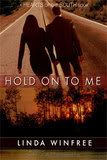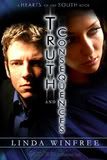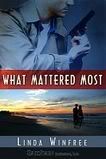Writing Tip...The troublesome scene
We all know them--the scene that just won't dissolve into our bloodline and work its way from the brain to the fingertips. The causes are many: poor character development, poor plot development, disinterest in the work and my favorite...The dreaded revisions, which brings with it a whole other set of issues: same scene but different pov, fitting in a new scene into an already completed manuscript as if it was born there, etc.
I took a full day seminar with Debra Dixon last fall through RWA Silicon Valley Chapter. In between all the talk of GMC and the Hero's Journey (incredibly valuable course if you ever get the opportunity to take it with her), she lead us in an assignment to tackle that tough scene.
I'm going to share that with you here, as it is a simple, but powerful tool. (I can see I'm working on tip themes here.)
Next post, I'll take it one step further and add my own suggestions for organizing that scene, giving it structure and purpose.
First: Close your eyes and set yourself in the scene. Take a moment to imagine the setting and the characters, ground yourself there. Then ask yourself these questions:
- What do you see?
- What do you smell?
- What do you feel?
- What do you taste?
- What do you hear?
Simple, right? I already do that, you say? Good. Do it again, and this time write down your answers. You'll be surprised at how a fuzzy, disjointed image can become rich and concrete when you transfer those basics from your brain to the paper.
In my recent revisions on Hiding In Plain Sight, I've changed a lot of scenes--deleted, modified, switched pov. And I've had to add a few that have been very difficult for me to write. They are kill scenes, written in the victim's pov. That moment before death when they see the end.
Here's my fuzzy image: Villain and victim are in a basement, she's tied and has been there for two days. He's praying over her (thinks he's performing an exorcism) when he takes that one final step and snaps beyond his already psychotic state, killing her instead of saving her (at least he thinks he's saving her).
Can you see it?
Okay, now here's the concrete breakout...I'm the victim because this is written in the victim's pov:
What do I see?
- I see gray, cinderblock walls, gray cement floor, open framing two by four above me with pipes and wires snaking through the boards.
- I see darkness and dancing shadows beyond the glow of candlelight.
- I see fifty, maybe a hundred candles of every shape and size surrounding me.
- I see my clothes, scraps heaped on the floor after he cut them from my body.
- I see my own naked body with shadows dancing over my pale skin.
- I see Gabe (villain) kneeling at my side, wearing nothing but workout shorts. His big body is covered in sweat. His head is bowed, eyes closed tight. He's rocking back and forth with a rosary wrapped around his fingers.
- I see the basement stairs behind him, a light from the kitchen above illuminating my exit, my freedom.
Now can you REALLY see it?
What do I smell?
- Fragrance from the burning candles, some spicy, some flowery.
- The tang of Gabe's fresh sweat mingled with my own stale odor.
- The dank, moldy scent of the basement.
- Chemicals, oil, grease.
What do I feel ?
I'm taking this one step further than Debra did, separating this out into physical and emotional feeling.
Physically?
- The bite of rope at my wrists and ankles.
- The crusted blood there pinching my skin when I move.
- The unbearable ache in my shoulders from being held over my head for forty-eight hours, like they're going to pop from my sockets like a Thanksgiving turkey.
- The ache in my back, neck, legs.
- The trembling of my fatigued muscles.
- The soft foam pad beneath my back.
- The cold cellar air prickling my skin, sinking into muscle.
- The effort it takes to draw breath, the way my lungs burn.
- The throb in my face where Gabe whacked my cheekbone.
- Exhaustion.
- And, damn, I've got a killer headache.
Emotionally?
- A whirlwind of emotions that change from moment to moment.
- Hopelessness.
- Fear peaking at terror.
- Confusion.
- Anger with myself for being vulnerable. Anger at Gabe for doing this to me, for hiding his psychosis.
- Desperation.
What do I taste?
What do I hear?
- Gabe's endless chanting. I hear the change in his voice as he also succumbs to fatigue, frustration, anger, desperation.
- When Gabe leaves: Silence.
- The soft flicker of candle flames.
- The creak of rope when I move.
- The blood pumping in my ears.
- My own heart beating.
- My own breathing.
- My own moans.
- My own cries.
- My own prayers.
- Some strange voice in my head.
- The voices in my dreams.
- The distant sound of a barking dog.
- An occasional car engine drive by.
- More silence.
So what do you think? Powerful? I'd say so.
I take ten minutes to scribble this out and damn if I'm not psyched to write this scene now. It's fresh and vivid in my mind, my fingers are itching to get to the keyboard and pour out the images and emotions I've created in my little list.
Now make this your own. Add questions that will spur your creativity. Ask things of your character that elude you. Work harder on those areas in which you're deficient. (I often forget about taste.)
Something that might be very powerful to add would be: What am I thinking? Awesome fodder for internals and emotion.
One more suggested technique for the really tough scenes that you've just got to plow through:
- Write the bare bones action.
- Come back and layer in emotion.
- Take another pass and layer in senses.
- On the last pass tighten, refine, fill holes.
I've found that some scenes are too emotional to write in one pass and come out richer when created in stages.
Give it a try, let me know how it works, tell us about your own techniques for toughing through that dreaded scene you've been avoiding.







2Comments:
This is fantastic! I'm so printing this out . . .
Oooh. That's so good!
(And I won't even take credit for making you write that troublesome scene.)
;)
Post a Comment
<< Home